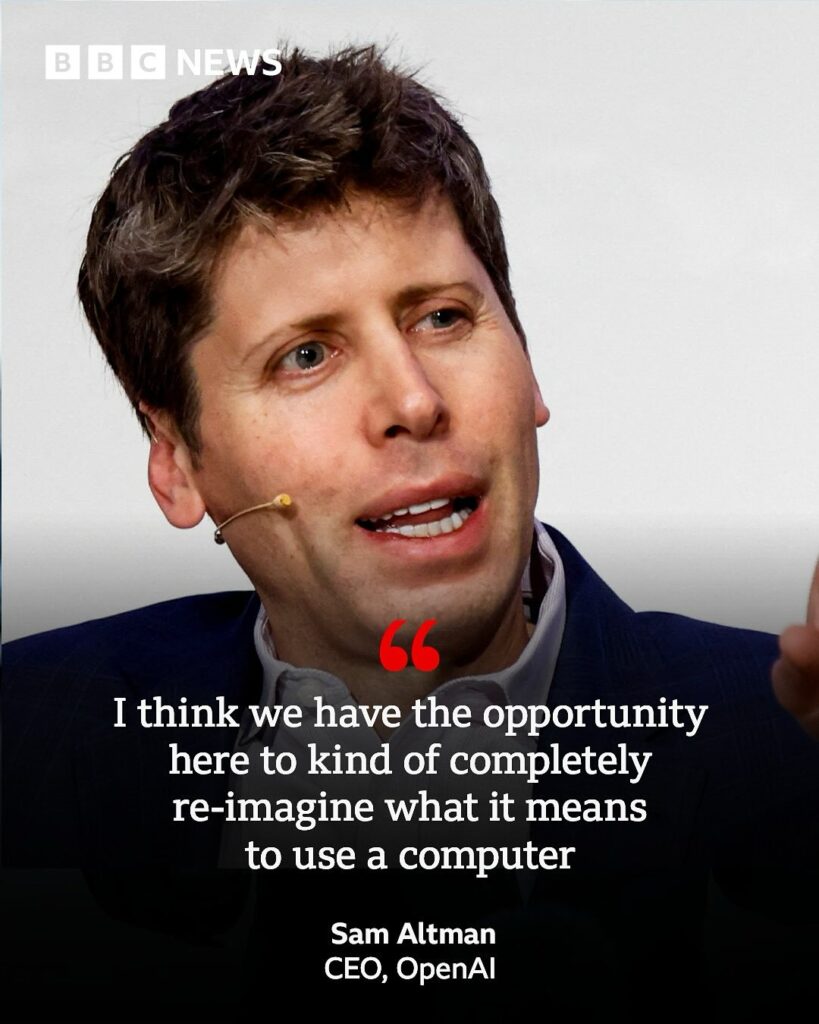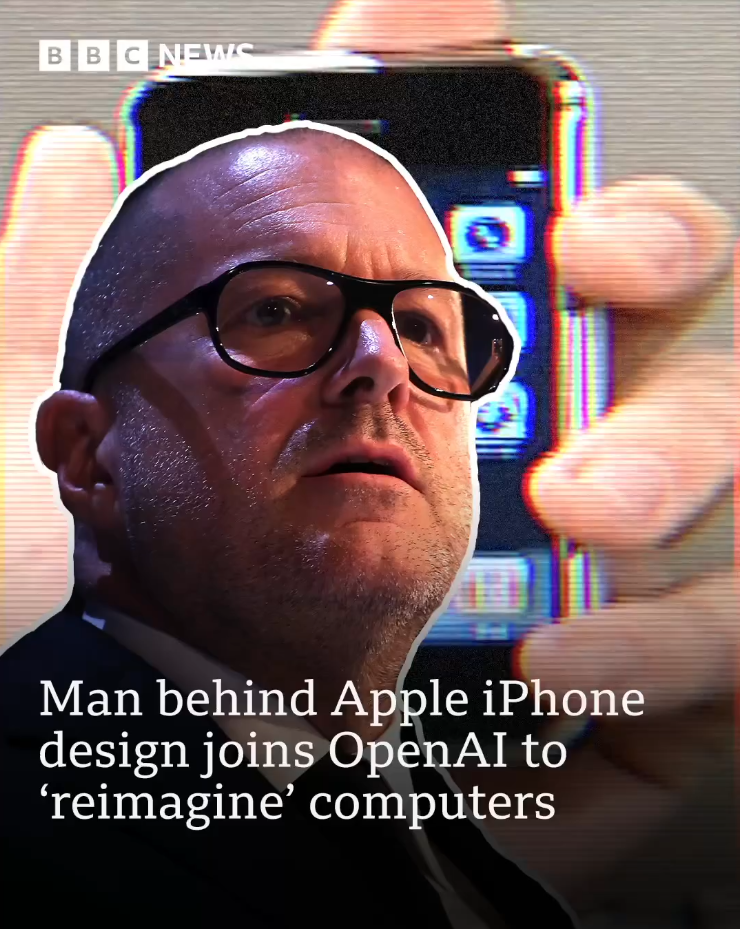
In what could become one of the most transformative partnerships in the tech world, Sir Jony Ive — the legendary British designer best known for his iconic work at Apple — is joining forces with OpenAI, the artificial intelligence research and development powerhouse. The announcement has sent ripples across Silicon Valley and beyond, hinting at a future in which the intersection of human-centered design and advanced AI could redefine not just devices, but the very concept of computing itself.
Speaking on the collaboration, Ive stated: “I think we have the opportunity here to kind of completely re-imagine what it means to use a computer.” With those words, the design world and tech industry alike were put on notice: a new chapter is being written, one that could fundamentally change how humans interact with machines.
The Man Behind Apple’s Design Revolution
Sir Jonathan Paul Ive — better known simply as Jony Ive — is synonymous with minimalist, elegant, and intuitively functional design. Over nearly three decades at Apple, Ive led the design of the iMac, iPod, iPhone, iPad, MacBook, and Apple Watch. His design language, heavily influenced by simplicity and human utility, helped elevate Apple into the most valuable and admired company in the world.
Ive’s close collaboration with Steve Jobs produced a philosophy where design wasn’t just skin-deep. The way a product felt, how it responded to touch, how it sounded — these were considered as essential as the engineering inside. Under Ive’s influence, Apple’s devices didn’t just function — they delighted, becoming cultural icons.
He departed Apple in 2019 to start his own creative firm, LoveFrom, which has since taken on design projects in luxury fashion, sustainability, and now, artificial intelligence. His return to the spotlight — and his decision to team up with OpenAI — signals an intent to once again place design at the center of technology’s next leap.
Why OpenAI?

OpenAI, the company behind ChatGPT and the GPT series of large language models, has rapidly established itself as a leader in artificial intelligence. Founded with the mission to ensure that artificial general intelligence (AGI) benefits all of humanity, the company has been pushing the boundaries of what machines can do — from generating realistic text and images to reasoning, planning, and learning in increasingly humanlike ways.
Yet, as AI grows more capable, there is a growing need to shape how we experience and interact with it. That’s where Ive comes in. The convergence of his user-first design philosophy with OpenAI’s advanced technology sets the stage for a reimagining of human-machine interfaces.
According to sources familiar with the partnership, Ive’s role will be to explore new hardware and design experiences that allow AI to be more seamlessly integrated into our lives — not through screens and keyboards alone, but through entirely new forms of interaction that are yet to be invented.
The Quest to Redefine the Computer
When Ive talks about reimagining what it means to use a computer, he’s not just referring to hardware redesign. The concept of a “computer” — historically a screen-and-keyboard box — is undergoing a dramatic transformation thanks to AI.
Imagine an assistant that doesn’t wait for typed commands but anticipates needs, understands intent, and communicates across voice, gesture, vision, and emotion. Imagine a device with no screen, yet it knows what you want and responds in natural language. This is the future Ive and OpenAI may be chasing.
In a world where AI can already generate emails, answer questions, write code, create art, and tutor children, the bottleneck is no longer in what the machine can do — but in how humans can comfortably, confidently, and ethically interact with it. The goal, then, is not just to build smarter tools, but more human tools. Devices that feel like companions, not command centers.
Beyond Screens: A New Age of Human-AI Interfaces
Ive’s disdain for clutter and his passion for intuitive design could lead to AI products that depart radically from today’s norms. While companies like Meta are betting on AR/VR headsets, and others on wearables or smart home devices, OpenAI and Ive could chart a completely new course — one where the interface itself becomes ambient, invisible, and organically embedded in daily life.
Such a shift would align with OpenAI CEO Sam Altman’s own vision of AGI as a utility — a tool as ubiquitous as electricity or the internet. If AI becomes omnipresent, the next design frontier isn’t just about making it work — it’s about making it invisible, ethical, secure, and humane.
The Ethical Imperative
Reimagining computing at this scale comes with enormous responsibility. As AI systems become more powerful and more embedded in our personal environments, questions of privacy, surveillance, autonomy, and bias become even more critical. Ive’s history of design rooted in empathy and restraint could serve as an ethical compass for OpenAI as it explores new frontiers.
Critics of big tech have long argued that innovation has too often outpaced regulation and ethical considerations. A designer like Ive, known for elevating quality over speed, could bring a much-needed voice of caution and care. His influence might ensure that the next generation of AI tools are not just powerful, but trustworthy.
What Might Come Next?
While neither Ive nor OpenAI has revealed concrete product plans, speculation is already running wild. Some envision a new class of AI-driven personal assistants — perhaps a successor to the smartphone, powered by GPT-like models and wrapped in a design as intuitive and elegant as the iPhone once was.
Others see the birth of new educational or creative tools, or even hardware platforms that replace traditional computing devices altogether. Whatever emerges, it’s unlikely to be evolutionary. With these two forces joining hands, the goal seems revolutionary.
This could be the first time since the original Macintosh or iPhone that a serious attempt is being made to reinvent how humans fundamentally relate to their computing devices.
A Moment of Cultural Significance
The pairing of Ive and OpenAI represents more than just a business collaboration — it’s a cultural moment. It signifies a broader shift in the tech industry: from raw capability to meaningful experience. From products that can do everything, to products that help us do what matters.
As we stand at the threshold of the AI era, this partnership underscores a crucial truth — that intelligence, no matter how artificial, must ultimately serve human creativity, comfort, and care.
Sir Jony Ive, with his unmatched design pedigree, may be exactly the visionary needed to ensure that our future with AI is not only intelligent, but beautiful.



